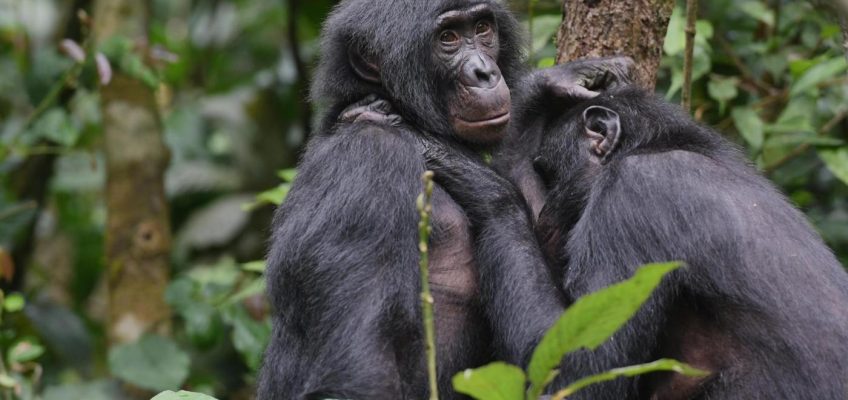By ADITHI RAMAKRISHNAN
NEW YORK (AP) — Female bonobos find strength in numbers, teaming up to fend off males in the wild, a new study finds.
Related Articles
Trump science cuts roil university labs, targeting bird feeder research, AI literacy work and more
A new Minnesota cover crop could help make air travel greener, UMN St. Paul researchers say
Beyond Ivy League, RFK Jr.’s NIH slashed science funding across states that backed Trump
The ‘return’ of an extinct wolf is not the answer to saving endangered species, experts warn
How to catch the shooting stars of spring’s first meteor shower, the Lyrids
Along with chimpanzees, bonobos are among humans’ closest relatives. Scientists have long wondered why bonobos live in generally female-dominated societies since the males are physically bigger and stronger.
Three decades of observations in Congo — the only place the endangered bonobos are found in the wild — lend support to the idea of a sisterhood where female bonobos band together to assert their power.
These girl groups chased male bonobos out of trees, securing food for themselves, and females that grouped more ranked higher in their community’s social ladder, researchers found.
This image provided by Martin Surbeck shows bonobos lounging on a fallen tree in the Congo in 2020. (Martin Surbeck/Kokolopori Bonobo Research Project via AP)
“It’s very clear that you don’t want to overstep as a male bonobo,” said study author Martin Surbeck from Harvard University.
Findings were published Thursday in the journal Communications Biology.
Female bonobos’ combined numbers seem to turn the tide against a male’s physical strength, Surbeck said. It’s one of the rare times such a strategy has allowed females to come out on top in the animal kingdom. Spotted hyenas similarly find power in groups.
Female bonobos linked up even when they didn’t have close ties, supporting one another against the males and cementing their social standing. The observations show how female bonobos work together to protect themselves from male violence, said biological anthropologist Laura Lewis with the University of California, Berkeley.
This image provided by Martin Surbeck shows bonobos resting and socializing on a fallen tree in the Congo in 2020. (Martin Surbeck/Kokolopori Bonobo Research Project via AP)
The findings support “the idea that humans and our ancestors have likely used coalitions to build and maintain power for millions of years,” Lewis, who was not involved with the research, said in an email.
The Associated Press Health and Science Department receives support from the Howard Hughes Medical Institute’s Science and Educational Media Group and the Robert Wood Johnson Foundation. The AP is solely responsible for all content.


Leave a Reply